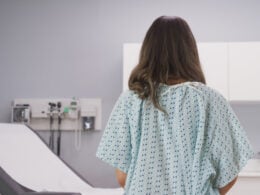Ah, periods. They might be frustrating and inconvenient when they arrive, but we certainly don’t like to see them unexpectedly disappear. The most common reason for periods to stop is—you might have guessed it—being pregnant. But the prolonged absence of periods, known as amenorrhea, even outside of pregnancies or breastfeeding affects about 1 in 25 women, and all too often women are left with more questions than answers about what’s behind their missing menses.
Is it ever normal to not have a period?
Between a woman’s first period (menarche) and her last (menopause), the only times her body will stop ovulating in a state of normal health are during pregnancy and while breastfeeding.
Before a girl goes through puberty, menstruation doesn’t occur because her ovaries have not yet begun to produce the estrogen needed for ovulation to occur. In the United States, the average age of menarche is 12, though it can range from ages 10 to 16 depending on nutrition, weight, genetics, and even ethnicity.
For the next four decades or so after menarche, menstruation will naturally be put on pause by pregnancy and breastfeeding, during which levels of both estrogen and progesterone will actually be higher than at any other time. During pregnancy, menstruation (the shedding of the uterine lining) does not occur because the built-up endometrium is doing what it was made for—supporting the developing baby! After giving birth, women usually don’t ovulate for about six weeks. Breastfeeding can cause postpartum ovulation to be delayed anywhere from 6 to 8 months (or more for some women!). This is why under specific conditions the lactational amenorrhea method (LAM) can be used to prevent pregnancy.
For most women, periods stop permanently around age 50 due to menopause, when estrogen levels (which begin declining in the mid-30s for most women) drop low enough that ovulation no longer occurs.
What causes periods to stop
Other than in the scenarios listed above, menstruation (which signals that ovulation occurred) is critical to women’s development and continued health. To learn more about the amazing role of ovulation in breast, heart, brain, immune, and bone health, check out Natural Womanhood’s series on why women need periods!
In most cases, amenorrhea is caused by a problem within the hormonal system (made up of the hypothalamus, pituitary gland, and ovaries) that results in the ovaries not releasing an egg. Without ovulation, the endometrium doesn’t build up (because no pregnancy is possible), and menstruation won’t occur. Other factors that less commonly cause periods to stop include birth defects, genetic disorders, medications, use of illicit drugs, and conditions affecting the uterus, cervix, or vagina.
The underlying causes of amenorrhea vary widely depending on whether a girl never starts having periods, known as primary amenorrhea, or if periods start and then stop, which is called secondary amenorrhea. In a 3-part series, Natural Womanhood is exploring the causes of amenorrhea and what you can do if you experience it. In this first part, I’m covering the causes of primary amenorrhea.
Primary Amenorrhea
Primary amenorrhea is defined as not having had a first period by the age of 15, and it is far less common than secondary amenorrhea. Usually, primary amenorrhea occurs due to a genetic disorder or a birth defect impacting the reproductive organs.
Turner syndrome
Turner syndrome is a genetic disorder that causes one of the X chromosomes to be partially or totally missing. The vast majority of women with this disorder are infertile due to connective tissue developing in place of the ovaries. Turner syndrome only causes primary amenorrhea, so if a woman starts having periods and then stops, this is one culprit she can rule out.
Congenital adrenal hyperplasia
Another genetic disorder frequently behind cases of primary amenorrhea is congenital adrenal hyperplasia (CAH). Affecting the adrenal glands (located above the kidneys), CAH causes these glands to overproduce testosterone (which all women naturally have in their bodies, but normally in very small amounts).
There are two types of CAH: classic and nonclassic. Classic congenital adrenal hyperplasia is much more severe, often resulting in birth defects and potentially life-threatening cortisol deficiency; this type is more likely to cause primary amenorrhea. Nonclassic congenital adrenal hyperplasia, on the other hand, is much more mild and often goes undetected until puberty, when it tends to cause irregular menstruation and development of masculine characteristics such as facial hair and a deep voice.
Genital birth defects
Primary amenorrhea is also common for girls with genital birth defects, which may be caused by improper levels of hormones during fetal development, sex chromosome abnormalities, or exposure to substances like drugs or hormones. Examples of such defects include ambiguous genitalia and imperforate hymen, where the hymen— the thin membrane which normally covers part of the vagina— completely blocks the vagina opening. When periods begin, the blood is trapped instead of flowing out.
Delayed puberty
An overall delay in sexual development will also result in primary amenorrhea. In most cases of delayed puberty, normal development just happens later. This pattern often runs in families; a girl whose mother started her periods late will also likely begin late. Being underweight due to poor nutrition, dieting, or overexercise also causes delayed puberty and primary amenorrhea.
Other reasons for primary amenorrhea
Some other, less common reasons for primary amenorrhea and delayed puberty include disorders such as diabetes, inflammatory bowel disease (IBD), kidney disease, cystic fibrosis, and anemia; radiation therapy or cancer chemotherapy; or autoimmune disorders (such as Hashimoto’s thyroiditis, Addison disease, and some disorders that directly affect the ovaries).
Pituitary dysfunction
Because the hypothalamus and pituitary glands play a crucial role in sexual development, any disruption of this hormonal system in the brain can also cause hormone production to slow down or stop. Normally, puberty begins because the hypothalamus gives off bursts of gonadotropin-releasing hormone (GnRH). GnRH triggers the pituitary gland to produce luteinizing hormone (LH) and follicle stimulating hormone (FSH), which in turn stimulate the ovaries to grow and begin producing estrogen. Head injuries at any age, particularly severe ones, can inflict lasting damage on women’s reproductive health, as they often impact pituitary function. Research has shown that women commonly experience missed periods after a concussion, for example.
Other causes of pituitary dysfunction that can lead to primary amenorrhea include a tumor on or near the pituitary gland or the hypothalamus—though usually non cancerous, these can prevent the start of periods either due to suppression of LH and FSH or overproduction of prolactin.
Hypothalamic dysfunction
Another potential cause of delayed puberty is a genetic disorder called Kallman syndrome, characterized by underdevelopment of certain neurons in the brain that are responsible for signaling the hypothalamus to stimulate hormonal production in the pituitary gland. Essentially, Kallman syndrome cuts off the initial step in this process, preventing the hypothalamus from releasing the GnRH that tells the rest of the system that it’s time to grow.
PCOS
Although polycystic ovarian syndrome (PCOS) symptoms generally start after the onset of puberty and periods, and PCOS is more commonly associated with periods that start and then become irregular, it can also cause primary amenorrhea due to ovulatory dysfunction. The underlying cause of PCOS is uncertain, but some evidence suggests it may result from androgen excess, or overproduction of testosterone, during fetal development.
The bottom line about primary amenorrhea
While primary amenorrhea is in general far less common than secondary amenorrhea, it has many potential causes. In part 2 of our series on amenorrhea, we’ll cover the causes of secondary amenorrhea. In part 3, we’ll cover what to do if you, or your daughter, experience amenorrhea, particularly why it’s important to seek out the help of a healthcare provider trained in restorative reproductive medicine (RRM).
Additional Reading:











